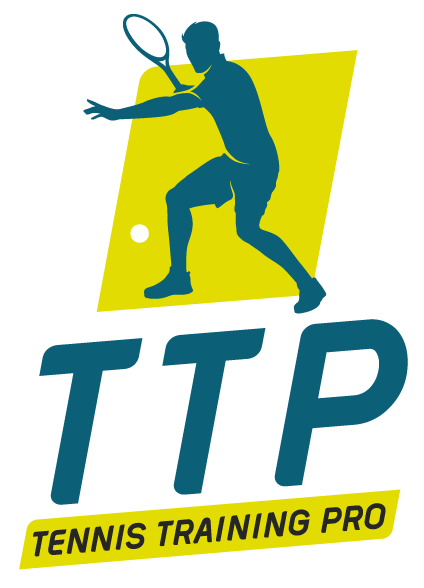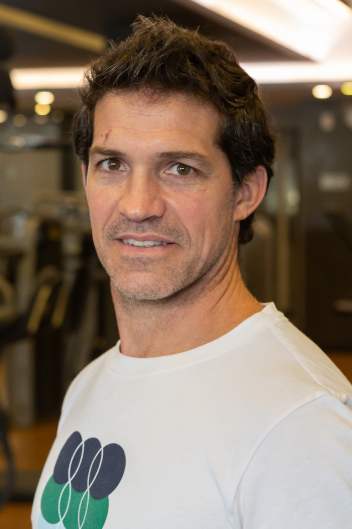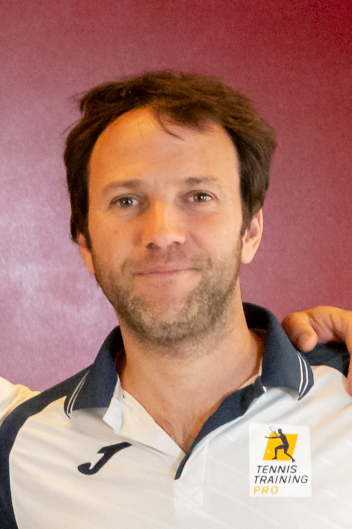Concepts on tennis mobility
20 de October, 2019
Escribe: Mariano Gaute (TTP ®)
When we talk about on-court mobility, we need to address fine motor skills and the different situations that take place during tennis matches. We need to identify and analyze these topics before planning a progressive program to finally design the exercises. This article stemmed from our readings on biomechanics and the works written by some of our colleagues. It was also the result of an exchange with other coaches we work with as a team to improve our players’ performance. Timing, precision and speed are crucial in tennis: our aim is to analyze each situation and movement in deep during our coaching lessons instead of overlooking them.
The Gravity Step
After a stroke, the tennis player recovers a good court position with side steps, his eyes glued to the ongoing rally. Right before the opponent makes contact with the ball, those lateral moves are followed by a step that leaves the player suspended in mid air: the “gravity step”. This all happens very fast, from the moment the ball gets to his opponent’s racket till he hits it again with a certain trajectory. All analyzing processes take place while we are still in mid air and our first step- the “split step”, already takes us towards the place of the ball’s intended trajectory by the opponent.
The Split step
- Cause to break.
- Separate.
Taking these two definitions of the word “split” into account- now referring to tennis, we can talk about the moment when we switch or interrupt our moving direction or, more specifically, the way we start sprinting towards the ball. If “split” means “divided, separated,” then how should we land on the ground to start sprinting?
The First Step
This is the first step a player makes in the direction of the ball after the split step. Generally, when we cover distance moving laterally- before a return or a groundstroke-, hip external rotation occurs. When we run forward, we flex our hips.

Gravity step – Split step – First step
In the pictures above you can see the different stages: the player recognizes the direction of the ball and uses his brain to analyze it. His brain sends an efferent impulse to run towards the tennis ball. All this happens milliseconds before his feet touch the ground.
Going back to our definition, once we know in which direction we have to run, it is convenient to land with a split step, pushing off to the chosen direction. I think landing on both feet, evenly distributing our body weight, would be a waste of time and effort. The split step shown in the pictures allows us to cover longer distances in the first step in a faster and more efficient way, opening the hips in the direction we want to follow (left hip external rotation in this case).
After analyzing videos and photographs, we can say the split step is not as easily seen in all players as it is in Andy Murray, who usually takes a high gravity step and strongly marks the split step. Our question for a future study would be whether these players that apparently- land on both feet really have their weight evenly distributed between their feet, or if they add more of their body weight (splitting their weight as they step on the ground) to the foot that will push them towards their direction.

Andy Roddick. Australian Open 2009 training. Backhand return.
The gravity step and the split step conform an initiating movement: the most efficient way to start moving towards the ball once its intended trajectory has been understood. The split step starts with the foot that is further from the opponent ball’s intended direction. For example, when a right-hander gets ready to hit a forehand, he would land on his left foot first. A split second later, the player’s right foot will touch the ground, but he would have already rotated his hip externally toward the intended movement (*1).

(Bautista Otegui): How to train reaction applying these initiating movements.
Now, if we follow this concept and stick to it, how can we sprint forward? For example, towards a drop shot? There is a simple explanation in Mark Kovacs’s article: “Landing on the foot furthest from their intended direction of the ball”. If we have to sprint forward, we use our rear leg to push off the ground. This means that after we make the gravity step and understand that we have to move forward, we have to prepare our body so that the lead foot lands behind the foot that will step first while we are still in mid air and before landing on a split step.

(Guido Andreozzi): : Gravity step, split step and first step sprinting forward.
References:
- Kovacs, M. (2009). Movement for Tennis: The Importance of Lateral Training. Strength and conditioning journal, 31(4), 77-85.
- Wordreference: web
- Tennis biomechanics
(*1) Kovacs, M. (2009). Movement for Tennis: The Importance of Lateral Training. Strength and conditioning journal, 31(4), 77-85.

 ES
ES EN
EN PT
PT



